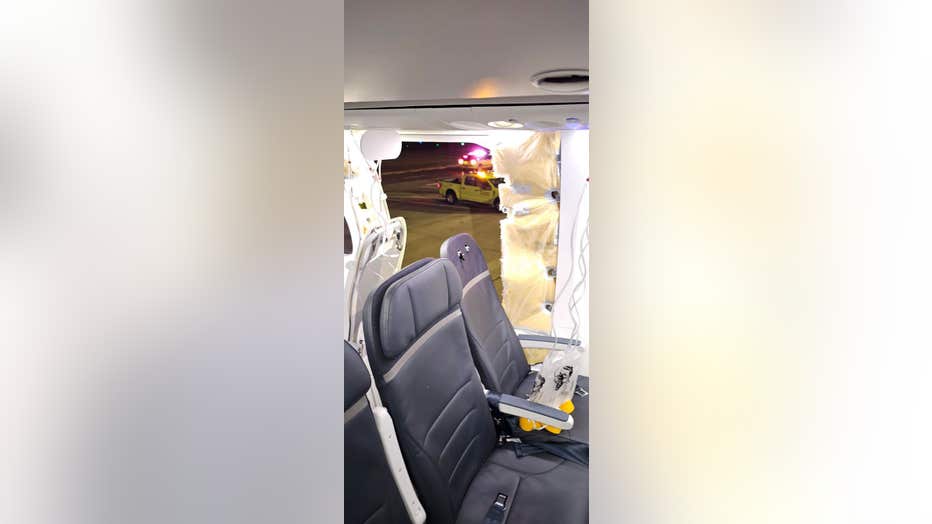171 Alaska and United Max 9 737s remain grounded

What caused door of Boeing 737 to blow out on Alaska Airlines flight being investigated
An investigation is underway into what caused the door of a Boeing 737 Max 9 jet to come off last Friday during a flight from Portland on Alaska Airlines. An internal investigation has revealed another airline has also found loose bolts in doors on some of its planes.
PORTLAND, Ore. - One-hundred seventy-one Alaska and United Boeing 737 Max 9 airliners remain grounded until the Federal Aviation Administration clears them as safe to fly. On Friday evening, a door plug blew out of the plane, threatening the lives of the passengers and crew onboard three miles up.
The flight crew called the "Mayday" in, saying, "We just depressurized, we're declaring an emergency. We need to descend to 10,000."
The plane safely landed and the blown-out door plug has been recovered from a teacher's yard in Beaverton, Oregon, about 18 miles from Portland airport. With the plane and door in hand, the physical evidence is abundant. "Was it structural failure of the plug itself? Was it latched properly? This airplane was three months out of the factory," said John Nance, a veteran airline pilot and aviation expert.
The National Transportation Safety Board (NTSB) is looking for those answers, saying Alaska knew the plane's pressurization system warning light had previously come on and rest three by technicians times before Saturday's flight. "What they asked for is for maintenance to take a more in-depth look at that light that was illuminating, but that work had not been done yet prior to this event," said Jennifer Homendy, Chair of the National Transportation Safety Board.
Alaska specially ordered that plane not to fly to and from Hawaii, so it would not be over a vast expanse of water. "That's a great question. a great question for Alaska. Those are questions we are asking as well," said the NTSB’s Homendy. The force of the decompression blew the super secure cockpit doors open.
Passengers were lucky to be at 16,000 feet, when a blowout happened and breathing masks were deployed. At that altitude, the air is very thin and the outside temperature is minus 17 degrees.

Alaska Airlines flight incident. January 5, 2024.
Had it been at cruise level, 30,000 to 35,000 feet, it would be a much more explosive event where the air is un-breathable and the temperature is an incredible 67 degrees below zero. It would take the crew at least two minutes to get the plane down to 10,000 feet, where the air and temperature are tolerable.
The other major problem, the cockpit voice recorder overwrote the recording of the event, essentially erasing it. "They used to be 30 minutes and then it was increased to two hours at one point and now we are pushing to increase it to 25 hours, consistent with international partners," said Homendy.
But such recorders would only be required for planes built after the rule was enacted. "Since 2018, we've done 10 investigations where the CVR was overridden," said the NTSB Chair.
United Airlines just released a statement about its findings. In it the company says, "We have found instances that appear to relate to installation issues in the door plug. For example, bolts that needed additional tightening. These findings will be remedied by our tech ops team to safely return the aircraft to service."

